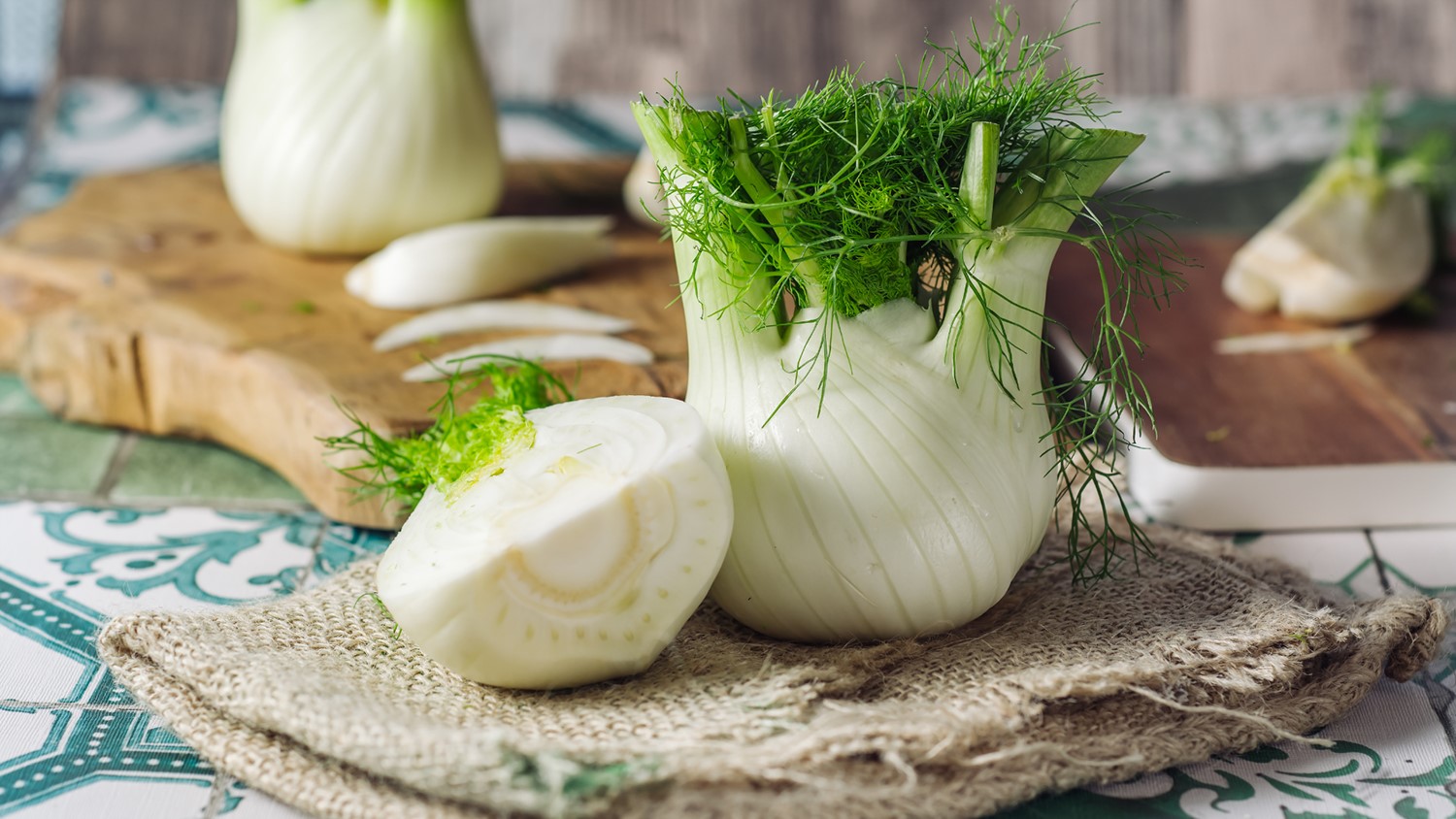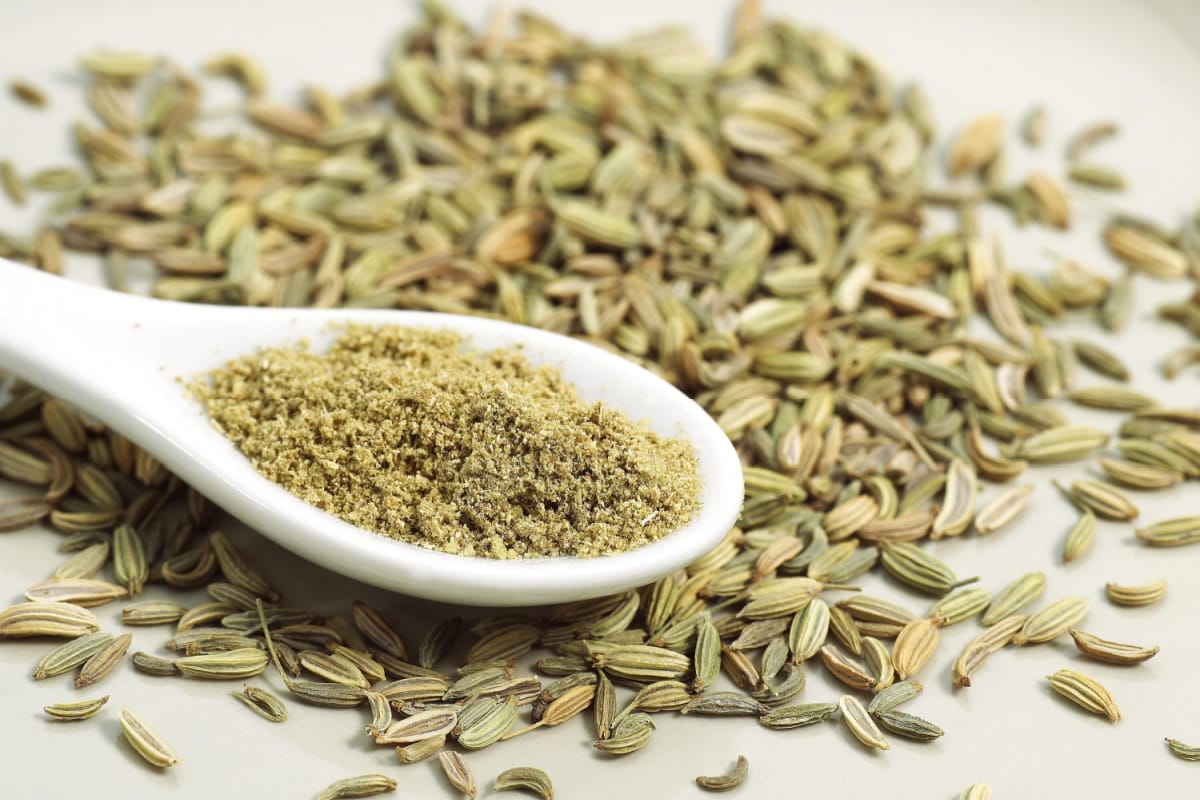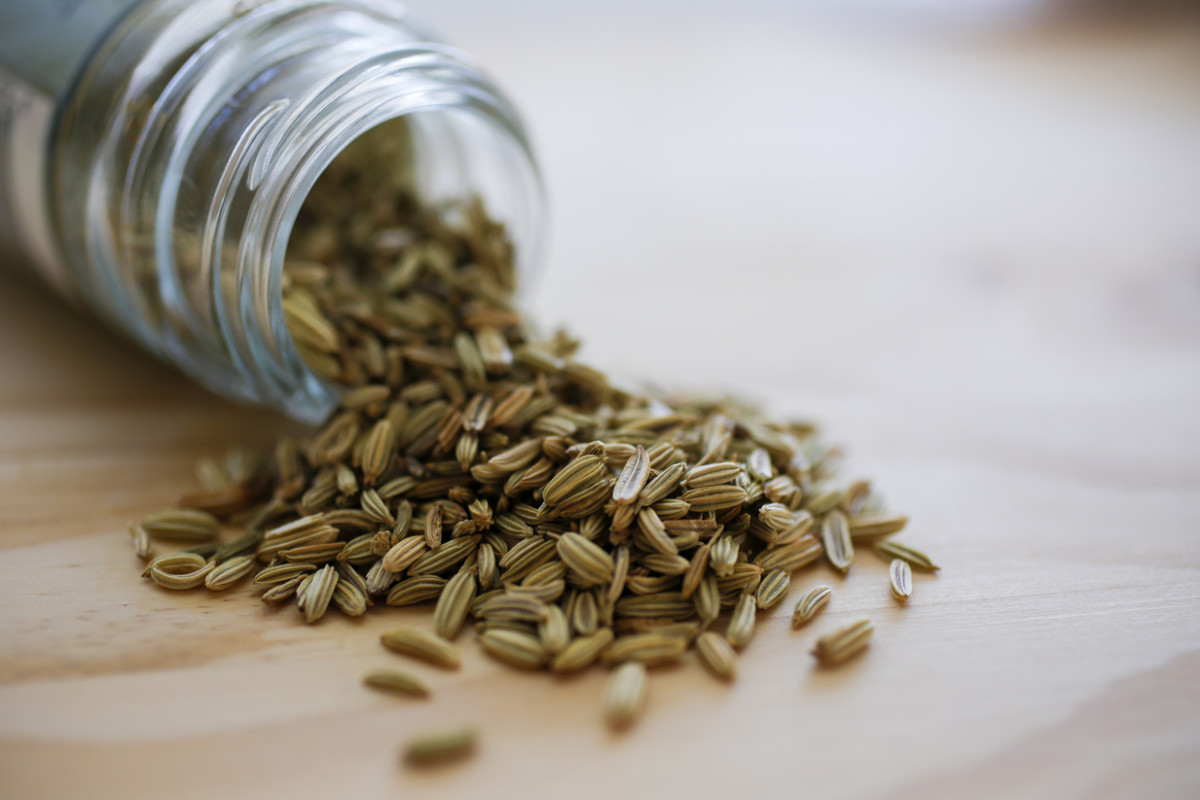

Articles
How To Store Fennel
Modified: February 23, 2024
Discover the best techniques for storing fennel in this helpful articles. Follow our step-by-step guide for optimum freshness and flavor.
(Many of the links in this article redirect to a specific reviewed product. Your purchase of these products through affiliate links helps to generate commission for Storables.com, at no extra cost. Learn more)
Introduction
Fennel, with its unique licorice-like flavor and aromatic qualities, is a versatile and delicious ingredient that can enhance a variety of dishes. Whether you want to store fennel to keep it fresh for future use or to preserve its flavors for longer periods, knowing the right methods can make a significant difference.
In this article, we will explore the best practices for storing fennel, ensuring that it remains crisp, flavorful, and ready to be used in your culinary creations. We will discuss everything from selecting fresh fennel at the store to proper storage techniques for whole bulbs, chopped or sliced fennel, and even freezing. Additionally, we will share tips on storing fennel fronds, which can add a beautiful garnish to your dishes.
Whether you have just discovered fennel or you are a seasoned cook looking to make the most of this versatile vegetable, join us as we delve into the art of storing fennel and prolonging its freshness.
Key Takeaways:
- Store fennel in a cool, moist environment to maintain its crispness. Properly prepared and stored fennel can last for weeks, allowing you to enjoy its unique flavor and health benefits in various dishes.
- Utilize frozen fennel in cooked dishes without the need to thaw. Blanching before freezing preserves its flavor and texture, making it a convenient addition to soups, stews, and more.
Read more: How To Store Fennel Bulbs
Understanding Fennel
Fennel, scientifically known as Foeniculum vulgare, is a flowering plant that belongs to the carrot family. It is cultivated for its bulb, stalks, leaves, and seeds, all of which are edible and offer unique flavors and culinary uses. Fennel bulbs have a crisp texture similar to celery, while the leaves, also known as fronds, have a delicate and feathery appearance.
Fennel has a distinct taste, reminiscent of licorice or anise, making it a popular ingredient in Mediterranean and Middle Eastern cuisines. Its flavor can range from mild to strong, depending on the variety and freshness of the fennel. This versatile vegetable can be enjoyed raw in salads, roasted, grilled, sautéed, or used as a flavoring agent in dishes such as soups, stews, and sauces.
Besides its culinary uses, fennel is also known for its potential health benefits. It is a good source of fiber, vitamin C, potassium, and antioxidants, which can support digestion, promote healthy immune function, and reduce inflammation. Fennel seeds are often used in herbal and alternative medicine to aid digestion and alleviate symptoms such as bloating and gas.
When it comes to storing fennel, understanding its unique characteristics is essential. Fennel is a delicate vegetable prone to dehydration and loss of flavor if not stored properly. By employing the correct storage methods, you can preserve the freshness and maximize the shelf life of this delicious ingredient, allowing you to enjoy its flavor and health benefits in various dishes.
Selecting Fresh Fennel
Choosing fresh and high-quality fennel is the first step in ensuring its longevity during storage. Here are some tips to help you select the best fennel:
- Look for firm bulbs: When choosing fennel bulbs, make sure they are firm and free from any soft spots or blemishes. The bulbs should be crisp and have a vibrant white or pale green color.
- Check the fronds: The feathery fronds should be bright green and not wilted. Fresh fronds are a good indicator of the overall quality of the fennel.
- Avoid large stalks: While some fennel varieties may have thick and sturdy stalks, it is generally best to choose bulbs with smaller, slender stems. This ensures that the fennel is younger and more tender.
- Smell for freshness: Give the fennel a gentle sniff to check for a fresh, aromatic scent. The fragrance should be pleasant and reminiscent of anise or licorice.
It’s worth mentioning that fennel is available year-round, but its peak season varies depending on the region. Generally, fennel is at its freshest and most flavorful from late fall to early spring. During this time, you are more likely to find fennel with excellent quality and taste. However, with proper storage techniques, you can enjoy fennel’s flavors throughout the year.
By carefully selecting fresh fennel, you lay the foundation for successful storage and ensure that you have the best possible ingredients to use in your recipes. With a little attention to detail, you can enjoy the full flavor and benefits of this versatile vegetable in your culinary adventures.
Preparing Fennel for Storage
Before storing fennel, it is crucial to prepare it properly to maintain its freshness and flavor. Follow these steps to prepare fennel for storage:
- Trim the stalks and fronds: Start by removing the stalks from the fennel bulb. Cut them close to the bulb, leaving only a small portion of the stalk intact. Set aside any fresh and vibrant fronds that you plan to use as a garnish or flavoring.
- Remove any damaged or wilted parts: Inspect the fennel bulb for any brown or damaged spots. If you find any, trim them away using a sharp knife.
- Wash the fennel: Rinse the fennel bulb under cold water to remove any dirt or debris. Gently scrub the surface, especially around the base and root area.
- Dry thoroughly: After washing, pat the fennel bulb dry with a clean kitchen towel or paper towels. Excess moisture can lead to faster spoilage, so it is crucial to ensure the fennel is completely dry before storage.
Once you have prepared the fennel, it is ready to be stored using the appropriate methods. By taking the time to properly clean and dry the fennel, you minimize the risk of mold or bacteria growth during storage, ultimately extending its shelf life.
Now that your fennel is prepared, let’s explore the different storage methods to maintain its freshness and flavors for an extended period.
Storing Whole Fennel Bulbs
When it comes to storing whole fennel bulbs, it’s important to keep them in a cool and moist environment to maintain their crispness. Here’s how you can store whole fennel bulbs:
- Refrigerator storage: Place the whole fennel bulbs in a perforated plastic bag or wrap them loosely in a damp paper towel. The perforations or loosened wrapping allow for proper air circulation while maintaining the necessary moisture.
- Vegetable drawer: Store the wrapped or bagged fennel bulbs in the vegetable drawer of your refrigerator. The temperature should be set between 32°F (0°C) and 40°F (4°C) to prevent spoilage.
- Do not wash before storing: It’s essential not to wash the fennel bulbs before storing them. Moisture can cause them to spoil faster, so it’s best to wash them right before using them.
- Check periodically: Check on the fennel bulbs periodically and discard any that show signs of decay or damage. This helps prevent the spread of spoilage and ensures that only fresh fennel is stored.
When stored properly, whole fennel bulbs can stay fresh in the refrigerator for up to two weeks. It’s always best to use them as soon as possible for the most vibrant flavors and textures.
Now that you know how to store whole fennel bulbs, let’s explore the storage methods for chopped or sliced fennel.
Store fennel in the refrigerator, wrapped in a damp paper towel and placed in a plastic bag to keep it fresh for up to 1 week. Avoid washing it until ready to use to prevent moisture buildup.
Read more: How To Store Fennel Fronds
Storing Chopped or Sliced Fennel
If you’ve prepared more fennel than you need for a particular recipe and want to store the leftover chopped or sliced fennel, follow these guidelines to maintain its freshness:
- Airtight container: Place the chopped or sliced fennel in an airtight container or resealable plastic bag. Make sure to remove as much air as possible before sealing to prevent moisture loss and maintain optimal freshness.
- Refrigerator storage: Store the container or bag in the refrigerator’s vegetable drawer. The colder temperature will help slow down the deterioration process.
- Label and date: It’s a good practice to label the container or bag with the contents and date of storage. This way, you can easily identify and track the freshness of the fennel.
Chopped or sliced fennel can stay fresh in the refrigerator for around 3-4 days. After that, it may start to lose its crispness and flavor. It’s recommended to use it within this time frame to enjoy the best quality.
If you find yourself with excess chopped or sliced fennel that you won’t be able to use within a few days, consider freezing it to extend its shelf life. Let’s explore the freezing method for fennel.
Freezing Fennel
Freezing is an excellent option if you have an abundance of fennel and want to preserve it for longer periods. While freezing can slightly alter the texture of fennel, it retains its flavors and can still be used in many cooked dishes. Follow these steps to freeze fennel:
- Blanching: Start by blanching the fennel. Blanching involves briefly immersing the fennel in boiling water, followed by an ice bath. This process helps preserve the color, texture, and flavor of the fennel. Bring a pot of water to a boil and submerge the fennel in it for about 2 minutes. Then, transfer the fennel to a bowl of ice water to stop the cooking process.
- Drain and dry: Once the fennel has cooled in the ice bath, drain it well and pat it dry using paper towels. Excess moisture can lead to freezer burn, so it’s crucial to remove as much water as possible.
- Portion and seal: Divide the blanched and dried fennel into portion sizes that you’re likely to use in recipes. Place each portion in a freezer-safe bag or airtight container. Squeeze out any excess air before sealing to prevent freezer burn.
- Label and date: Don’t forget to label the bags or containers with the contents and date of freezing. This helps you keep track of the fennel and ensures that you use the oldest batches first.
Frozen fennel can be stored in the freezer for up to 6 months. However, it’s best to use it within the first few months for optimal quality.
When you’re ready to use the frozen fennel, there’s no need to thaw it. Frozen fennel can be added directly to soups, stews, stir-fries, or any other cooked dishes. The blanching process ensures that the fennel cooks quickly and evenly, making it a convenient addition to your recipes.
Now that you know how to freeze fennel, let’s move on to storing fennel fronds, which are great for adding a burst of flavor to your dishes.
Storing Fennel Fronds
Fennel fronds, with their delicate and feathery texture, are not only visually appealing but also packed with flavor. They can be used as a garnish, added to salads, or used as an herb in various recipes. If you have leftover fennel fronds that you want to store, here are some ways to keep them fresh:
- Trim and clean: Start by trimming any wilted or discolored parts from the fennel fronds. Then, rinse them under cold water to remove any dirt or debris.
- Dry thoroughly: After washing the fronds, gently pat them dry with paper towels or use a salad spinner to remove excess moisture.
- Wrap in damp paper towels: Place the fennel fronds in a slightly damp paper towel or cloth and gently wrap them. This helps maintain the necessary moisture level and prevents them from drying out.
- Refrigerator storage: Store the wrapped fennel fronds in a sealed plastic bag or an airtight container. Place them in the refrigerator’s vegetable drawer to ensure they stay fresh.
- Check periodically: Regularly check on the fennel fronds and discard any that show signs of wilting or deterioration. Freshness is key when it comes to using fennel fronds to enhance your dishes.
When stored properly, fennel fronds can stay fresh in the refrigerator for about 1 to 2 weeks. However, it’s best to use them as soon as possible for maximum flavor and visual appeal. Remember to incorporate them into your recipes to add a touch of freshness and aromatic flair.
Now that you know how to store fennel fronds, let’s explore some tips for using the stored fennel in your culinary creations.
Using Stored Fennel
Now that you have successfully stored fennel using various methods, it’s time to unleash your culinary creativity and incorporate the stored fennel into delicious dishes. Here are some ideas on how to use stored fennel:
- Roasted fennel: Preheat your oven to 425°F (220°C). Cut the stored fennel bulbs into wedges, toss them with olive oil, salt, and pepper, and spread them on a baking sheet. Roast for about 25-30 minutes until the fennel is tender and slightly caramelized. Enjoy it as a side dish or use it as a topping for pizzas and salads.
- Grilled fennel: Fire up the grill and brush the stored fennel bulbs with olive oil. Season with salt and pepper, then grill them until tender and lightly charred. Grilled fennel makes an excellent addition to sandwiches, pasta dishes, or as a standalone side dish.
- Sautéed fennel: Heat a skillet over medium heat and add some butter or olive oil. Slice the stored fennel bulbs and sauté them until softened and golden brown. Sautéed fennel can be added to risottos, pasta dishes, or used as a flavorful bed for grilled fish or chicken.
- Fennel salad: Slice the stored fennel bulbs into thin strips and toss them with your favorite salad greens, such as arugula or mixed greens. Drizzle with a vinaigrette dressing, sprinkle some fennel fronds, and top with your choice of nuts or cheese for added texture and flavor.
- Fennel-infused sauces or dressings: Chop the stored fennel and incorporate it into sauces, dressings, or marinades to infuse them with a unique anise-like flavor. Use these flavorful accents to enhance your seafood, roasted vegetables, or grilled meats.
These are just a few ideas to get you started, but the possibilities are endless when it comes to using stored fennel in your culinary creations. Experiment with different recipes and let the taste and aroma of fennel elevate your dishes.
Remember, when using stored fennel, always taste and adjust the seasoning as needed, as the flavors may mellow slightly during storage. Enjoy the versatility and distinct flavor that fennel brings to your dishes.
After exploring these cooking options, you are now equipped to make the most of your stored fennel. Let your culinary skills shine and savor the unique taste and aroma that fennel adds to your meals.
Read more: How To Store Fresh Fennel
Conclusion
Storing fennel properly is key to maintaining its freshness, flavor, and texture for longer periods. Whether you have whole fennel bulbs, chopped or sliced fennel, or fennel fronds, there are effective methods to ensure that these versatile ingredients stay in optimal condition.
By selecting fresh fennel with firm bulbs and vibrant fronds, you lay the foundation for successful storage. Preparing the fennel by trimming, cleaning, and drying it helps prevent spoilage and maintain its quality during storage.
When storing whole fennel bulbs, refrigeration in a cool and moist environment is essential. Wrapping them in perforated plastic bags or damp paper towels and placing them in the vegetable drawer of your refrigerator helps extend their shelf life.
For chopped or sliced fennel, keeping it in airtight containers or resealable bags in the refrigerator preserves its freshness for a few days. Freezing fennel is another effective option to prolong its shelf life, ensuring that you can enjoy its flavors and benefits for up to six months.
Fennel fronds, with their delicate texture and aromatic qualities, can be stored by trimming, cleaning, and wrapping them in damp paper towels. Properly stored fronds can maintain their freshness for up to two weeks in the refrigerator.
Using the stored fennel in various cooking preparations, such as roasting, grilling, sautéing, or adding it to salads and dressings, allows you to unlock the full potential of this versatile vegetable. The unique flavor and aroma of fennel can elevate your culinary creations and add a delightful twist to your favorite dishes.
In conclusion, with the knowledge and techniques shared in this article, you can confidently store fennel to extend its shelf life and savor its flavors throughout the year. So, embrace the versatility of fennel and enjoy the culinary possibilities it offers.
Remember, using fresh ingredients is always ideal, but knowing how to store them properly ensures that you can enjoy their taste and nutritional benefits even when they are not in season.
So, next time you come across fennel at the grocery store or have an abundance of this flavorful vegetable, follow these storage tips to make the most of your fennel and enhance your culinary experiences. Bon appétit!
Frequently Asked Questions about How To Store Fennel
Was this page helpful?
At Storables.com, we guarantee accurate and reliable information. Our content, validated by Expert Board Contributors, is crafted following stringent Editorial Policies. We're committed to providing you with well-researched, expert-backed insights for all your informational needs.














0 thoughts on “How To Store Fennel”